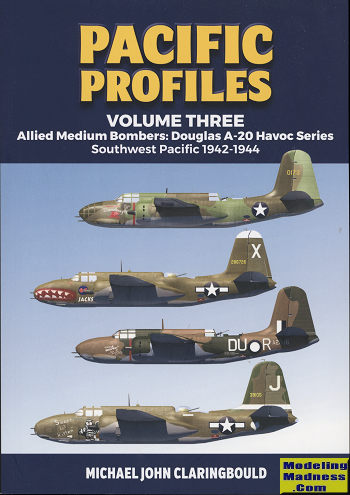 The southwestern
Pacific theater of operations was, for the
Allies, a tough place to conduct a war. First of all, there wasn't all that much
available with which to fight the war. The supply line was very long and just
getting trained units into the field was a challenge in and of itself. Secondly
New Guinea was fairly bereft of suitable air bases and other infrastructure.
The southwestern
Pacific theater of operations was, for the
Allies, a tough place to conduct a war. First of all, there wasn't all that much
available with which to fight the war. The supply line was very long and just
getting trained units into the field was a challenge in and of itself. Secondly
New Guinea was fairly bereft of suitable air bases and other infrastructure.
However, the Allies had it better than the Japanese, who
had poor supply lines and were always lacking in spare parts for their aircraft.
At least for the Americans and Australians, replacements in terms of aircraft,
crews and other items would eventually make it. For the most part, the SWPA was
a USAAC/F and Australian show when it came to air assets. Sure, the Navy
operated out of Guadalcanal and from carriers with the Marines eventually moving
up the Solomon chain, but that was the Solomons. New Guinea was another kettle
of fish.
This particular book concentrates on the A-20 in New
Guinea from 1942-1944. Initially, these planes were those operated by Dutch and
Australian crews using ex-Dutch DB-7s. Slowly, the USAAF built up units in
theater. The types operated were mostly the A-20A and the A-20G with a
smattering of A-20C aircraft being used. The biggest difference between the A
and G model was that the G had a proper gun nose and a Martin power turret. Of
course, early A-20Gs did not have this turret, which was normal as one simply
did not stop the assembly line during war just to ensure all of a certain
variant had the same equipment.
There were three Bomb Groups in theater by the end of
things. Each of these groups had four squadrons and each squadron had some sort
of marking or color to differentiate one squadron's planes from the others. The
first was the 3rd Bomb Group which consisted of the 8th, 13th, 89th and 90th
Bomb Squadrons. Next was the 312th Bomb Group with its 386th, 387th, 388th and
389th Squadrons. Finally, near the end of the campaign was the 417th Bomb Group
with the 672nd, 673rd, 674th, and 675th Bomb Squadrons. Also included is 22
Squadron RAAF, the only Australian A-20 unit in theater and other miscellaneous
units.
The book covers each of these groups and squadrons,
showing each squadron's common markings and colors along with a number of great
photos and profiles based on those photos. Each full color profile provides
information on that particular aircraft. No lengthy pilot stories or background
history on this as it concentrates on the aircraft and units involved in the
conflict.
It all makes for a superb reference book for the modeler
and enthusiast. I very much like this series and look forward to each new
volume. Most highly recommended.
April 2021
Copyright ModelingMadness.com. All rights reserved.
Review book courtesy of
Casemate Publishing. You can get your
copy from
this link.
If you would like your product reviewed fairly and quickly, please
contact the editor or see other details in the
Note to
Contributors.
 The southwestern
Pacific theater of operations was, for the
Allies, a tough place to conduct a war. First of all, there wasn't all that much
available with which to fight the war. The supply line was very long and just
getting trained units into the field was a challenge in and of itself. Secondly
New Guinea was fairly bereft of suitable air bases and other infrastructure.
The southwestern
Pacific theater of operations was, for the
Allies, a tough place to conduct a war. First of all, there wasn't all that much
available with which to fight the war. The supply line was very long and just
getting trained units into the field was a challenge in and of itself. Secondly
New Guinea was fairly bereft of suitable air bases and other infrastructure.